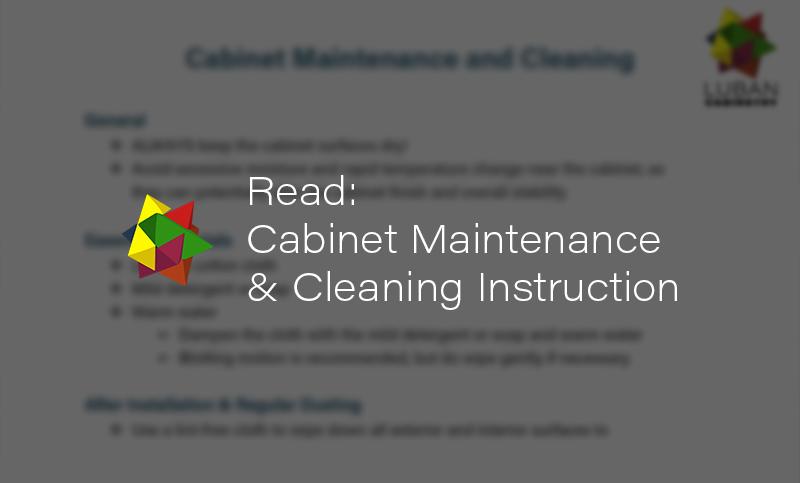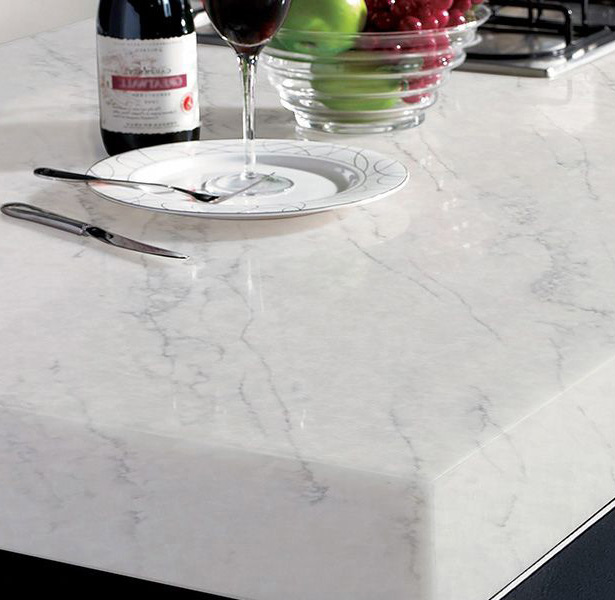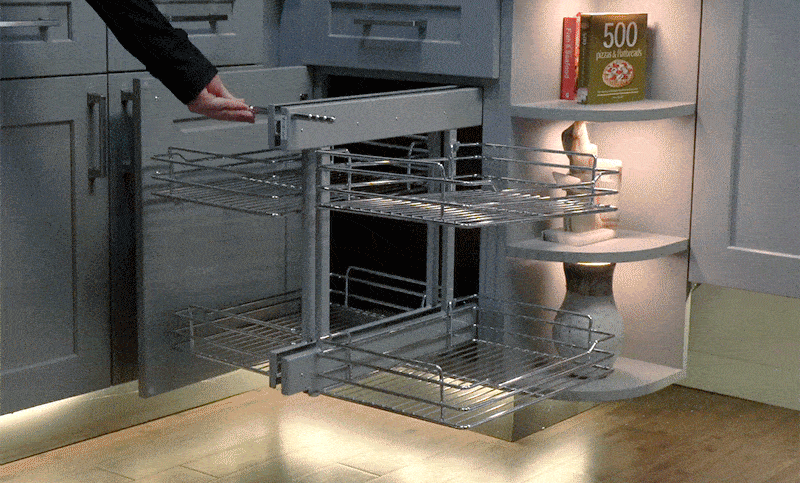CABINET MAINTENANCE AND CLEANING INSTRUCTION

General
- ALWAYS keep the cabinet surfaces dry!
- Avoid excessive moisture and rapid temperature change near the cabinet, as they can potentially alter the cabinet finish and overall stability
Essential Materials
- Lint free cotton cloth
- Mild detergent or soap
- Warm water
- Dampen the cloth with the mild detergent or soap and warm water
- Blotting motion is recommended, but do wipe gently if necessary
After Installation & Regular Dusting
- Use a lint-free cloth to wipe down all exterior and interior surfaces to remove dust
Basics
- Dry surfaces ASAP with lint free soft cotton cloth
- Leaving residues on cabinet surface can discolor and harm finishes
- Avoid using dishcloth and sponge
- Avoid ammonia-based cleaners
- Avoid soaps with dyes as they might taint the cabinet finish
Wipe Spills
- Food spills and grease will come off easily if promptly removed in a timely manner
- Wipe up spills immediately with a lint free soft cotton cloth to avoid the cabinet absorbing the moisture
- Check on areas around sink and dishwasher to make sure water and detergent residues are not staying on the cabinet surface
- Do not leave printed materials (i.e. magazines, receipts) on cabinet surface, as the printing ink can bleed into the cabinet finish
Moisture & Heat
- Keep any sort of moisture and heat away from the cabinet surface!
- Avoid draping damp or wet cloths over base cabinet doors
- Do not attach towel racks to the interior of the cabinet doors
- Use trays under pots or other items that leak water easily
- Avoid placing small kitchen appliances where the heat source or steam source is directed at the cabinet surfaces
- Use hot pads under hot items when setting them on top of wood surfaces
Abrasives
- NEVER clean cabinet surface with abrasive materials (i.e. scouring pads, steel wool, wire brushes, powdered cleaners)
- Avoid sliding objects across the cabinet surface
- Do not let the oven cleaner touch any part of the cabinet
- Be cautious when handling sharp objects (knives, scissors etc) in that they can damage the cabinet surface
- When you are unsure of a cleaner’s suitability, don’t use it.
- Harsh cleaners and detergents may penetrate the surface, hence allowing food or moisture to enter and deteriorate the cabinet finish.
- NEVER leave a cloth dampened with cleaners on a cabinet surface for any length of time
Glass Door Inserts
- Materials:
- Household glass cleaner
- A soft and clean cloth
- Apply glass cleaner directly onto the cloth instead of the glass or mirror
- Avoid excess glass cleaners dripping into cabinet joints and corners
- Ammonia should never be used at full strength





